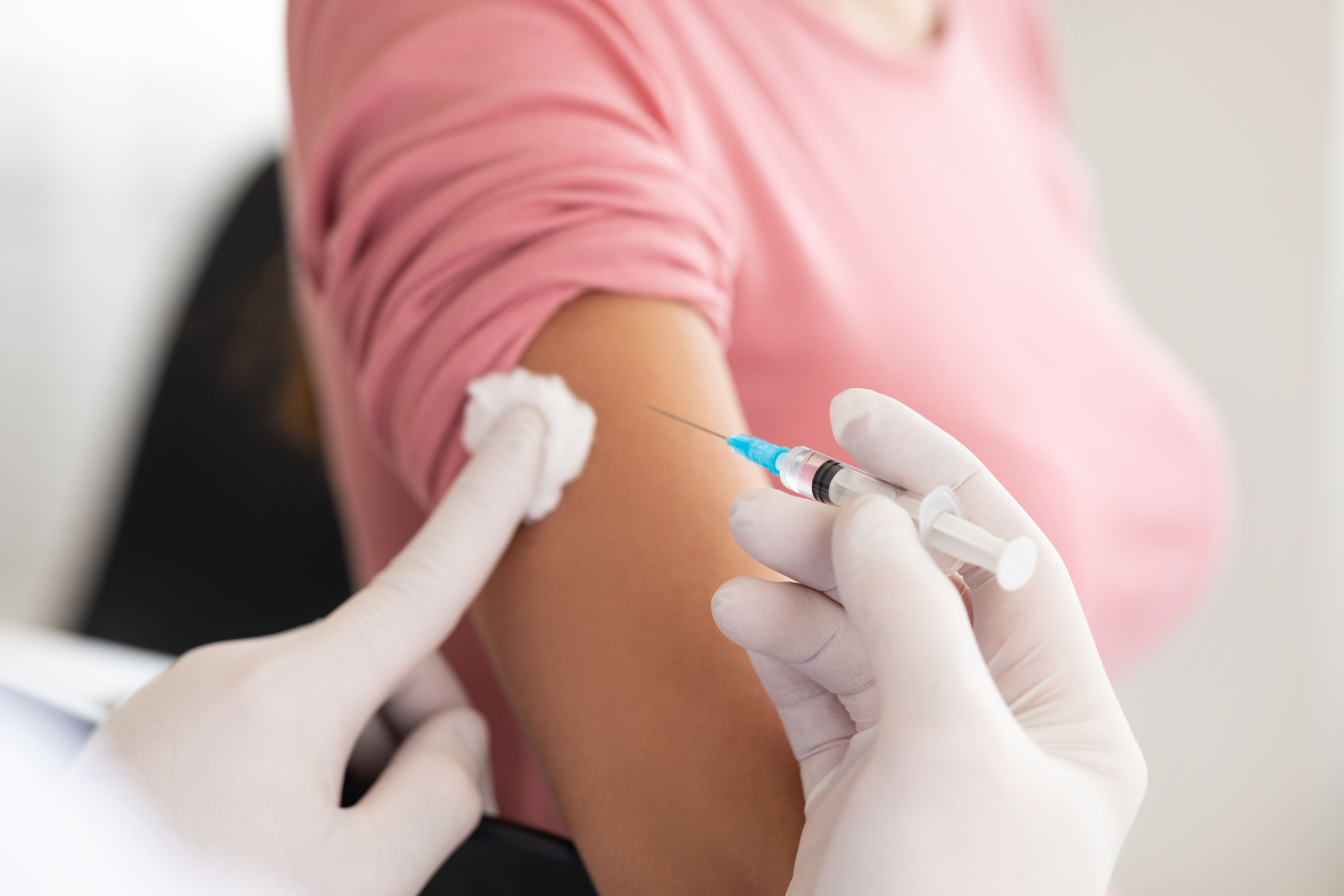There is an urgent need to address barriers to vaccination receipt among pregnant people living with HIV (PLHIV), according to a recent study published in JAMA Network Open.1
Takeaways
- The study indicates that pregnant people living with HIV (PLHIV) are not receiving recommended vaccines at recommended rates, with only a minority receiving Tdap, influenza, and COVID-19 vaccines.
- Various factors such as age, income, parity, and mode of HIV acquisition significantly influence vaccine receipt among pregnant PLHIV.
- Multiparous individuals living with HIV are less likely to receive influenza vaccination during pregnancy compared to nulliparous counterparts, emphasizing the need for tailored intervention strategies.
- The study identifies temporal trends, with higher Tdap vaccination rates observed in certain calendar years, suggesting potential fluctuations in vaccine uptake influenced by external factors.
- Given the suboptimal vaccination rates observed, the study underscores the urgent need for innovative strategies to improve vaccine uptake among pregnant PLHIV, emphasizing the importance of proactive interventions to safeguard maternal and infant health.
Vaccines are vital for routine prenatal care, with the combined tetanus, diphtheria, and acellular pertussis (Tdap), influenza, and COVID-19 vaccines recommended by the American College of Obstetrics & Gynecology. However, data has indicated use of these vaccines in only 56.6%, 69.2%, and 21.8% of pregnant patients, respectively.
Pregnant PLHIV receive similar recommendations for HIV vaccination as pregnant patients without HIV, but there is little information about antenatal vaccination for PLHIV. However, some studies have found decreased odds of influenza or Tdap vaccination among patients not vaccinated against HIV.
Maternal vaccination is vital for maternal and infant protection.2 Robert H. Hopkins, Jr, MD, noted that antibodies will transfer from mothers to their infants through the placenta, preventing potentially serious infection.
“We know that the risk of those diseases not only continues through pregnancy, but at least for a couple of weeks after delivery, and so, we want to make sure that those pregnant women are protected,” Hopkins said.
Investigators conducted a study to evaluate the prevalence of and identity factor linked to influenza and Tdap vaccination among pregnant PLHIV.1 Data was collected from the Surveillance Monitoring for ART Toxicities study, which has evaluated antiviral medication among pregnant PLHIV since 2007.
PLHIV who were pregnant or had a child aged under 5 years from December 1, 2017, to July 31, 2019, were included in the analysis. Eligibility criteria included available vaccination data and delivery between March 15, 2015, and February 28, 2020.
Vaccination receipt during pregnancy was reported as the primary outcome, determined through evaluation of medical record data. Vaccination outcomes included Tdap vaccination at 27 weeks’ gestation or greater, influenza vaccination during pregnancy, and both Tdap and influenza vaccination with appropriate timing.
Covariates included year of conception, age at conception, education level, race and ethnicity, annual household income, mode of HIV acquisition, parity, timing of prenatal care initiation, comorbidities, and substance use during pregnancy.
There were 310 pregnancies included in the final analysis, with a mean age at conception of 29.5 years. Of participants, 71% were Black, 25% Hispanic, and 77% with at least high school level education. Perinatally-acquired HIV was reported in 21% of pregnancies, multiparous status in 70%, and prenatal care initiation at the end of the first trimester in 69%.
Tdap vaccination was reported in 32.6% of pregnancies, influenza vaccination in 31.6%, and both in 22.6%. Pregnancies of patients who were younger, with lower income, multiparous, or had perinatally acquired HIV were less likely to report vaccination.
The adjusted risk ratio (aRR) of influenza vaccine receipt among multiparous PLHIV when compared to nulliparous PLHIV was 0.57. An association based on calendar year was also found, with an aRR for Tdap vaccination of 1.88 for delivery in 2016 to 2017 vs 2014 to 2015.
Pregnant PLIV had slightly reduced Tdap vaccination when reporting perinatally acquired HIV, with an aRR of 0.57. Similar results were reported for receiving both Tdap and influenza vaccinations.
These results indicated suboptimal antenatal vaccine receipts among pregnant PLHIV. Investigators concluded the impact of innovative strategies for improving vaccine receipt rates should be determined.
References
- Berhie S, Kacanek D, Lee J, et al. Routine vaccination during pregnancy among people living with HIV in the United States. JAMA Netw Open. 2024;7(5):e249531. doi:10.1001/jamanetworkopen.2024.9531
- Krewson C. The importance of maternal vaccination. Contemporary OB/GYN. November 13, 2023. Accessed May 8, 2023. https://www.contemporaryobgyn.net/view/the-importance-of-maternal-vaccination

